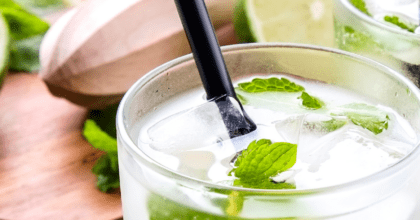32% of Brits have reduced or limited their alcohol intake
While the majority of Brits enjoy a tipple, it seems today’s consumers are taking a more conservative approach towards their alcohol consumption. Indeed, new research from Mintel reveals that as many as one third (32%) of all Brits have reduced or limited their alcohol intake over the past 12 months* in comparison to what they would usually consume. What is more, half (51%) of the nation’s beer, wine and cider drinkers say they are drinking less alcohol than a few years ago, confirming Brits are actively moderating their drinking habits.
While many glasses may now be half empty, it is economical factors which are encouraging consumers to cut back. Over two in four (44%) Brits who have reduced their alcohol have done so in order to save money, while 41% of those choosing to limit alcohol intake have done so to lose or avoid gaining weight. Improving personal health (39%) is also a notable trigger for cutting down and a further 30% have cut-back to reduce the risk of disease. Additionally, some 14% of all those who have cut back on alcohol have done so because they are worried about becoming dependent on alcohol and the same proportion (14%) have cut back to stay within current NHS and government guidelines.
The consumers most likely to have cut back at some point are those aged 25-34 (35%) and 35-44 (36%); meanwhile, geographically this peaks at 41% in the North East and dips to 27% in the South East/East Anglia.
Today, one fifth (19%) of adults report they do not drink alcohol, with a slightly higher proportion of women (22%) than men (17%) being teetotal.
Richard Caines, Senior Food & Drink Analyst at Mintel, said:
“As many as a third of all Brits have limited or reduced their alcohol consumption at some point in the last year. While this includes consumers cutting back for shorter and longer periods of time, it is a strong indicator that steps to moderate alcohol consumption are now widespread. Reducing alcohol consumption to save money reflects the discretionary nature of drinks and how they can add significantly to outgoings.”
The fact that Brits are reducing the amount of alcohol they drink presents a significant opportunity for low-alcohol and alcohol-free beers, ciders and wines. Today, lower-alcohol beer, cider or wine is drunk by around one quarter (23%) of alcohol drinkers, while overall, just 14% of Brits drink non-alcoholic or alcohol-free beer, cider or wine. Usage of lower-alcohol drinks is higher among men (26%) and significantly above average for 18-34-year-olds (41%).
Pubs and bars are proving popular venues for low alcohol brands, as a night out (26%) and a casual drink at the pub (22%) are when low-alcohol drinks most appeal to consumers if they are limiting or reducing their alcohol intake.
A taste more like standard-strength equivalents would sway nearly three in 10 drinkers (28%) to consume low-alcohol or alcohol-free versions of alcoholic drinks. However, overall, soft drinks are more popular than low-alcohol, alcohol-free versions of alcoholic drinks for all occasions. For current alcohol drinkers, 41% say that if they were limiting the amount of alcohol they were drinking when having a casual drink at the pub then they’d pick a soft drink, compared to 29% who would pick a low-alcohol or non-alcoholic version of an alcoholic drink.
“Replicating the taste of standard-strength alcoholic drinks and changing perceptions remains a key challenge for low-alcohol and alcohol-free manufacturers. Alcohol-free versions of alcoholic drink brands also need to look at the reasons why consumers are limiting or reducing their alcohol intake in order to increase their appeal as an alternative to standard-strength alcoholic drinks. This includes offering bigger savings to those looking to save money, as well as prominently highlighting lower calorie content compared to standard-strength equivalents to those looking to better manage their weight and improve their health.” Richard adds.
Finally, Mintel research reveals that weekly alcohol limits are a mystery for most Brits. Introduced in January, new guidelines on alcohol advise men and women to drink no more than 14 units of alcohol per week on a regular basis. However, when asked how many units of alcohol per week the current NHS and government guidelines advise for men and women, Mintel research indicates that only one in 10 (10%) adults correctly stated the 14 units a week recommended and more than four in 10 (42%) admitted that they didn’t know.
“While consumers are aware of the health dangers from drinking too much alcohol, few are clear on the limits advised in the new guidelines to keep health risks low. Low-alcohol drinks brands could benefit from driving awareness of these limits and what the number of units in individual drinks means in terms of their contribution to that weekly guidance. Doing so could help to encourage more switching over to low-alcohol products from higher-alcohol drinks.” Richard concludes.
*12 months to November 2016
Press copies of Mintel’s Attitudes towards Low- and Non-alcoholic Drink report and interviews with Richard Caines, Senior Food & Drink Analyst, are available on request from the press office.
-
Mintel StoreGet smart fast with our exclusive market research reports, delivering the latest data, innovation, trends and strategic recommendations....View reports
-
Mintel LeapMintel Leap is a revolutionary new AI-powered platform that will transform your research process....Book a demo







































